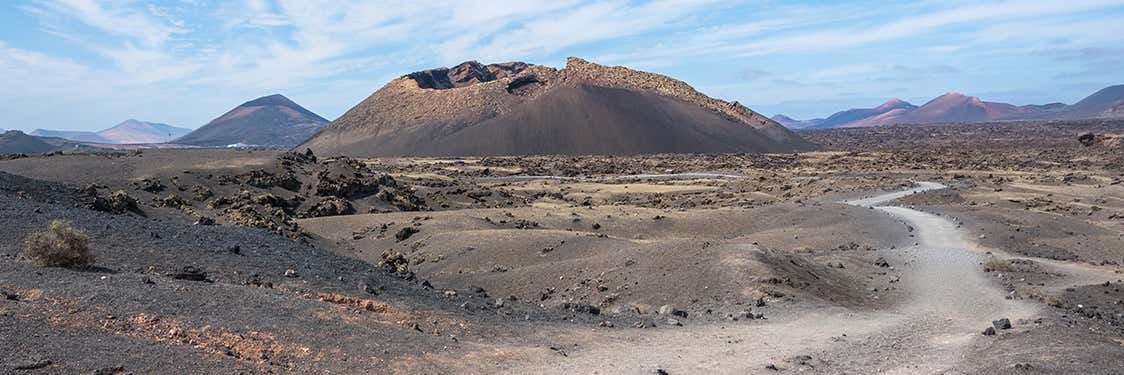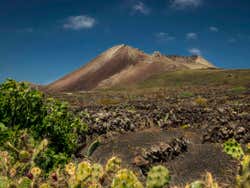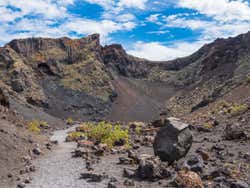
Cuervo Volcano
Formed in 1730 during the eruption of Timanfaya, the Cuervo volcano buried its surroundings with a wild and aggressive blanket of thick lava that's still visible today.
The Cuervo Volcano isn't very big, but with its height of 1,273 feet (388 meters) it offers a valuable sample of the rich geological heritage that led to the creation of Lanzarote.
Exploring the Cuervo Volcano
The walk along the path from the car park brings visitors closer to the imposing volcano, which seems to increase in size with every step. Once at the base, visitors can walk around it by following a circular path that gives access to the interior of the crater through an opening, offering a unique experience in a sort of wild natural theater.
The surroundings of the volcano aren't to be missed either, as it's surrounded by an extensive mass of petrified lava and framed by its neighbors, the Montaña Negra, the Montaña Colorada and the Timanfaya National Park.
A highly recommended visit
The Cuervo Volcano is a very special place that forms part of Lanzarote's living history. It's a highly popular visit among tourists as it's surprisingly easy to reach the inside of the crater, making it a good option for everyone, whether you're a hiking enthusiast or just want to take a look.
The entrance the the crater is on the right-hand side. The visit takes approximately 45 minutes. If you want to go all the way around the volcano, you'll need an extra 30 minutes.
To take the best photos of the Cuervo Volcano, the frontal view of the volcano from the path is one of the best spots, although photos from inside are also very special.
We recommend wearing comfortable walking shoes, as the terrain is made up of loose stones and it's uncomfortable to walk in beach shoes.
How to get to the Cuervo Volcano
The best way to get to Lanzarote's Cuervo Volcano is by car, via the La Geria road. There's a car park practically next to it, from which it's only a 20-minute walk to the base of the volcano.



